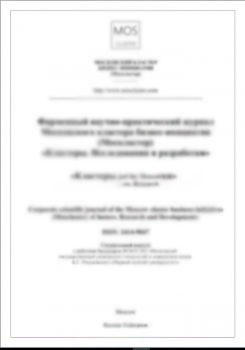Moskva, Moscow, Russian Federation
50.07
3297
In this article, we describe the mathematical model of the reflective surface as a scattering layer with the diffuse substrate and randomly rough Fresnel boundary. This model opens the way for a physically correct description of the light reflection processes with polarization account and hence enables engineers and designers to obtain much more precise results in their work. The algorithm of Fresnel boundary modeling based on the method of mathematical expectations reduces calculation time by constructing the randomly rough surface only at the ray trajectory nodes instead of constructing realizations of a random field. As a part of the complete reflective surface model, the algorithm made it able for us to model the effect of the average lens emergence.
mathematical model, reflection, refraction, polarization, reflective surface, light scattering
1. Bass, F.G., Fuks, I.M. Wave Scattering from StatisticallyRough Surfaces. Pergamon, 1979.
2. Budak, V.P., Basov, A.Y. Modeling of a scattering slab withdiffuse bottom and top reflecting by the Snell law. In Proceedingsof GraphiCon 2018, p. 399-401.
3. Budak, V.P., Grimailo, A.V. The influence of the lightpolarization account on the result of multiple reflectionscalculation. In Proceedings of GraphiCon 2018, p. 409-410.
4. Kargin, B.A., Rakimgulov, K.B. A weighting Monte-Carlomethod for modelling the optical radiation field in the oceanatmosphere system. Russ. J. Numer. Anal. Math. Modelling,Vol.7, No.3, pp. 221-240 (1992).
5. Marchuk, G.I., et al. The Monte Carlo Methods inAtmospheric Optics. Springer-Verlag, Berlin, 1980.
6. Mojzik, M., Skrivan, T., Wilkie, A., Krivanek, J. BiDirectional Polarised Light Transport. Eurographics Symposiumon Rendering 2016.
7. Wolff, L. B., Kurlander, D. J. Ray tracing with polarizationparameter // IEEE Computer Graphics and Applications. 1990.V. 10, No. 6, P. 44-55.





